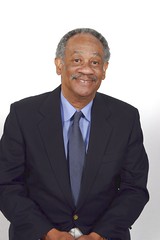Tips for Managing Employees at Work
Indications of Anger in the workplace are often subtle and unrecognized. It can be as mild as unspoken resentment against a co-worker or manager, and as overt as verbal or physical abuse of fellow employees. When anger progresses to the point of disrupting work or making the work environment unpleasant, anger among individuals in a company needs to be recognized and addressed.
The two key words in the preceding sentence are 'recognized' and 'managed.' It's essential for managers and supervisors to recognize subtle signs of anger in all forms. In particular, it's important to know when anger is proceeding beyond a normal stage of frustration to anger or rage. Most mental health professionals agree that anger is a normal and inevitable human emotion. Anger is considered problematic when it is too intense, occurs too frequently, lasts too longer, is harmful to self or others or leads to verbal or physical aggression. When the expression and self-management of anger is not properly handled, however, anger becomes potentially disruptive and counterproductive to individuals and the company as a whole. Inappropriate expression of anger damages morale and impacts the bottom line.
Managers and supervisors should be on the lookout for signs of stress, irritability, resentment, frustration and overt antagonism among employees. Signs of anger include: arguments or physical confrontation among employees (often instigated by one employee in particular); employees who 'get back' at others by undermining their activities (often without telling others of their anger); employees who criticize others constantly; and employees who become surly, spiteful, irritable or withdrawn.
Be sure to examine the stated reasons of an employee's anger. It's unreasonable to think that all employee anger is unfounded and illogical. Managers should examine situations and employee relations within the organization to determine if sources of anger are indications that real problems exist and that changes truly need to be considered. Anger management is not limited to line staff; instead, it is an intervention which is useful to anyone interesting in improving his or her interpersonal relationships.
When an employee is overly angry or aggressive, supervisors should meet with the individual and try to find out what is the cause of frustration. Unexpressed and uncontrolled anger can result in difficulties between employees, disruption of workflow and health problems within the individuals harboring angry feelings. When appropriate, anger management classes on-site should be made available for the entire workforce. This can best be accomplished by contacting a Certified Anger Management Facilitator for an on-site class. A list of Certified Anger Management Professionals can found by visiting the website of Anderson & Anderson at http://www.andersonservices.com/ .
The role of the Anger Management Facilitator is to explain that anger management is a course which teaches skills in recognizing and managing stress, anger, techniques for mastering assertive communication and increasing emotional intelligence/empathy. The Anderson & Anderson anger management model begins with as assessment of each client which is a simple Map to determine the level of functioning in managing recognizing stress, anger, styles of communication and the degree of emotional intelligence as well as motivation to change. The anger management class can be provided in a group format or on an individual basis especially for managers or supervisors.
George Anderson, MSW, BCD, CAMF
http://www.andersonservices.com/
http://www.anger-management-resources.org/
--- Anderson & Anderson is the first global provider of anger management facilitator certification.


0 Comments:
Post a Comment
<< Home